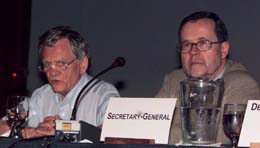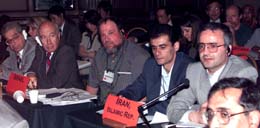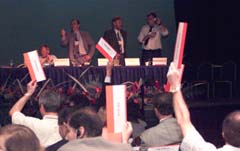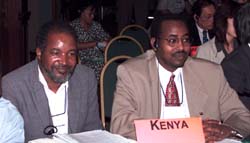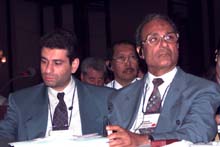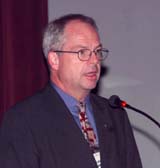 |
San José, Costa Rica 10-18 May 1999 |
|
Briefing |
|
Delegates at COP7
met in Plenary in the morning to take a decision on the draft resolution
on regional categorization. The Technical Session on Ramsar and Water
convened in the afternoon, and a contact group conducted informal consultations
on the Bureau work plan and budget in the evening. IN THE CORRIDORS
|
|
|
Back to ENB's Ramsar COP7 home page
© Earth Negotiations Bulletin, 1999. All rights reserved.
